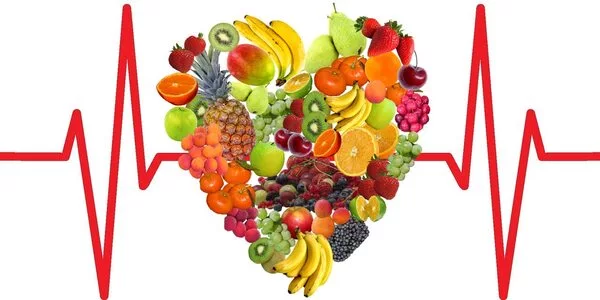In a simulation study using the latest U.S. statistics for stage 1 hypertension, researchers found that lifestyle changes to reduce systolic blood pressure to below 130 mm Hg may prevent 26,000 heart attacks and strokes and reduce health care costs over the next ten years. Among several lifestyle changes considered, such as diet, weight loss, physical activity, etc., the study found the largest impact on reducing cardiovascular events may come from adopting the Dietary Approaches to Stop Hypertension (DASH) diet. Analysis found that widespread adoption of non-pharmacologic interventions in lower-risk U.S. adults with Stage 1 hypertension may prevent nearly 26,000 cardiovascular disease events, avoid 2,900 deaths and save about $1.6 billion in associated health care costs over ten years.
Among several lifestyle changes that may reduce cardiovascular disease, adopting the DASH (Dietary Approaches to Stop Hypertension) diet may have the greatest impact for young and middle-aged adults with stage 1 hypertension, according to new research presented at the American Heart Association’s Hypertension Scientific Sessions 2022, held Sept. 7-10, 2022, in San Diego. The meeting is the premier scientific exchange focused on recent advances in basic and clinical research on high blood pressure and its relationship to cardiac and kidney disease, stroke, obesity, and genetics.
According to the 2017 joint American Heart Association and American College of Cardiology High Blood Pressure Guideline, stage 1 hypertension is defined as having a systolic (top number) level of 130-139 mm Hg or having a diastolic (bottom number) measure of 80-89 mm Hg.
The researchers estimate widespread adoption of lifestyle changes, such as limiting heavy alcohol consumption and exercising regularly, may prevent thousands of deaths and save more than one billion dollars in health care costs over the next 10 years. Their analysis found that adoption of the DASH diet could have the greatest benefit, with an estimated 15,000 heart disease events prevented among men and 11,000 event among women.
Nearly nine million young and middle-aged adults with untreated stage 1 hypertension represent a significant, impending burden for health care systems. Our results provide strong evidence that large-scale, healthy behavior modifications may prevent future heart disease, related complications and excess health care costs.
Kendra D. Sims
The DASH eating plan is specifically designed to help manage blood pressure. The diet emphasizes foods including fruits, vegetables, lean meat sources, nut, seeds, and grains and limits consumption of red meat, sodium, sugars, and sugar-sweetened beverages.
The research team estimated that 8.8 million U.S. adults, ages 35-64, have untreated stage 1 hypertension and would be recommended lifestyle changes, such as physical activity, sustained weight loss, moderating alcohol intake, and adoption of the DASH diet.
In the absence of other health conditions, such as type 2 diabetes or kidney disease, and a predicted >(10%) 10-year CVD risk, people with stage 1 hypertension are considered at low risk for heart attack or stroke compared to people with stage 2 or higher hypertension. Stage 2 hypertension is defined as systolic measures of 140 mm Hg or higher, or diastolic measures of 90 mm Hg or higher. The recommendations for treatment for people with stage 1 hypertension is based primarily on lifestyle changes rather than medication.
“Nearly nine million young and middle-aged adults with untreated stage 1 hypertension represent a significant, impending burden for health care systems,” said Kendra D. Sims, Ph.D., M.P.H., a postdoctoral fellow at the University of California, San Francisco and co-lead researcher of this study. “Our results provide strong evidence that large-scale, healthy behavior modifications may prevent future heart disease, related complications and excess health care costs.”

To simulate heart disease and stroke events, mortality and health care costs between 2018 and 2027, the researchers applied evidence from published meta-analyses and trial data about the blood-pressure reducing effects of lifestyle changes: dietary changes, sustained weight loss, physical activity, smoking cessation and alcohol moderation. About half of the modeled population were women and 61% (5.5 million) had regular health care access.
The researchers found that making recommended lifestyle changes to control blood pressure to below 130 mm Hg systolic or 90 mm Hg diastolic may have substantial health and economic benefits. They estimated that lifestyle changes could:
- Prevent 26,000 cardiovascular disease events, such as stroke, heart failure or heart attack;
- Avoid 2,900 deaths; and
- Save $1.6 billion in associated health care costs.
“Unfortunately, the availability and affordability of healthy food sources does not easily allow people to follow the DASH diet. Clinicians should consider whether their patients live in food deserts or places with limited walkability. Health counseling should include addressing these specific challenges to blood pressure control,” Sims said.
In May, the Association published a policy statement, Strengthening U.S. Food Policies and Programs to Promote Equity in Nutrition Security, which recommends expanding and improving U.S. nutrition policies and programs to ensure all Americans can access nutritious food. In 2020, the Association launched the National Hypertensive Control Initiative, a collaborative initiative with the U.S. Department of Health and Human Services that aims to improve blood pressure control among the most vulnerable populations, including racial and ethnic minorities.
“Members of many disadvantaged communities face barriers to healthy food and regular health care access,” Sims said. “This means they will not be able to benefit from counseling from a doctor. Future research should investigate the big picture: social conditions granting people the time and resources to make healthy lifestyle choices. Only with this information can we develop policies for the prevention of heart disease, especially for vulnerable adults.”





